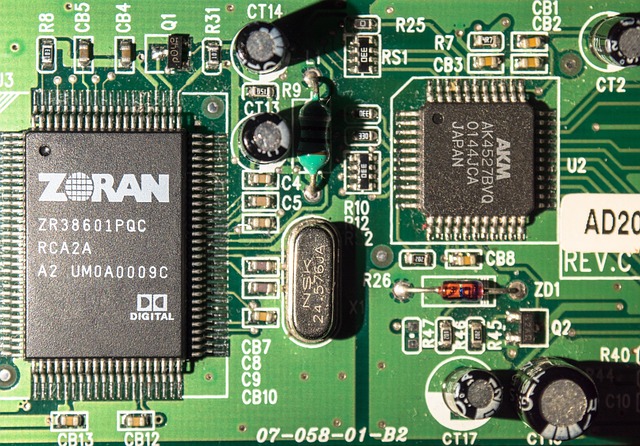Integrating an AI chatbot into an e-commerce website enhances user experience, drives conversions, and boosts business growth through improved customer satisfaction and data-driven insights. Key metrics include NPS, conversational engagement rates, click-through rates from recommendations, and average order values influenced by personalized interactions. Direct revenue generated from chatbot conversations can be tracked by attributing unique IDs to monitor post-chat actions. Cost savings are achieved through automated support, reduced labor costs, and improved operational efficiency. Strategic placement on high-traffic pages, personalization, regular training, and updates maximize ROI, leading to increased sales and enhanced user experience.
“Unraveling the return on investment (ROI) of AI Chatbots is pivotal for eCommerce businesses aiming to boost sales and enhance customer experiences. This article guides you through the process of calculating ROI, focusing specifically on chatbot applications. We’ll explore key metrics to measure performance, including direct revenue, cost savings, and operational efficiency. Furthermore, we’ll delve into strategies to maximize ROI, offering best practices for optimizing your eCommerce chatbot’s potential.”
- Understanding Return on Investment (ROI) for AI Chatbots
- Key Metrics to Measure Chatbot Performance on Ecommerce Sites
- Calculating Direct Revenue from Chatbot Interactions
- Evaluating Cost Savings and Operational Efficiency
- Strategies to Maximize ROI: Best Practices for Ecommerce Chatbots
Understanding Return on Investment (ROI) for AI Chatbots

Calculating the return on investment (ROI) for an AI chatbot, especially on an ecommerce website, involves understanding its impact on key business metrics. A well-integrated chatbot can significantly enhance user experience by providing instant customer support, answering product queries, and facilitating purchases. This leads to increased conversion rates and average order values, which are critical indicators of a chatbot’s value. By analyzing the cost of deploying the chatbot against the revenue it generates through these improved metrics, businesses can accurately measure ROI.
For ecommerce websites, tracking this ROI is made easier by access to detailed analytics. Marketers can monitor user interactions with the chatbot, attribute sales influenced by its assistance, and forecast future performance based on historical data. This allows for data-driven decisions about chatbot features, response times, and overall strategy. Ultimately, a robust AI chatbot for ecommerce should not only improve customer satisfaction but also drive measurable business growth.
Key Metrics to Measure Chatbot Performance on Ecommerce Sites

When evaluating the performance of an AI Chatbot on an ecommerce site, several key metrics offer valuable insights into its effectiveness and return on investment (ROI). First, customer satisfaction is paramount; measuring user feedback and Net Promoter Score (NPS) helps gauge how well the chatbot meets customer expectations. Conversational engagement rates, tracking the percentage of users interacting with the chatbot, provides a clear indicator of its appeal and utility.
Secondly, conversion rate optimization is critical. By analyzing the impact of chatbot interactions on sales, you can assess whether the bot successfully assists shoppers in their purchasing journey. Key performance indicators (KPIs) such as click-through rates from chatbot recommendations and average order values influenced by personalized interactions offer quantifiable measures of a chatbot’s success in driving ecommerce conversions.
Calculating Direct Revenue from Chatbot Interactions

Measuring the direct revenue generated from chatbot interactions is a crucial step in evaluating the success of an AI chatbot on an e-commerce website. This involves tracking and analyzing sales, conversions, and customer engagement metrics specific to chatbot conversations. One effective method is to attribute a unique transaction ID or session ID to each customer interaction, allowing for precise monitoring of post-chat actions. By linking chatbot interactions to subsequent purchases, you can calculate direct revenue by summing up the value of these transactions.
For example, an e-commerce platform might track how many visitors initiated a chat, out of which a certain percentage became paying customers after engaging with the chatbot. The direct revenue calculation would then involve multiplying the average order value by the conversion rate from chats to sales, providing a clear financial insight into the chatbot’s performance and its contribution to the overall business success.
Evaluating Cost Savings and Operational Efficiency

Evaluating Cost Savings and Operational Efficiency
Implementing a chatbot for an e-commerce website can lead to significant cost savings by automating various customer support tasks that would otherwise require human agents. Chatbots can handle a high volume of simple queries, such as product recommendations, order status updates, and frequently asked questions, thereby reducing the workload on live chat representatives. This direct reduction in labor costs is a tangible measure of return on investment (ROI).
Furthermore, chatbots enhance operational efficiency by expediting response times. They are available 24/7, ensuring that customers receive immediate assistance regardless of time zones or staffing schedules. Faster resolution of customer issues can lead to higher customer satisfaction and retention rates, indirectly contributing to increased sales and revenue for the e-commerce business.
Strategies to Maximize ROI: Best Practices for Ecommerce Chatbots

To maximize the return on investment (ROI) from an AI chatbot integrated into an ecommerce website, several best practices should be implemented. Firstly, ensure the chatbot is strategically placed on high-traffic pages like product category sections or checkout processes. This increases engagement and potential conversions. Secondly, leverage personalization by using customer data to deliver tailored recommendations and offers, enhancing user experience and encouraging purchases.
Additionally, regular training and updating of the chatbot’s conversational AI model are vital. Incorporating customer feedback and new market trends ensures the chatbot remains relevant and effective in addressing customer queries. Implementing these strategies can significantly improve the performance of an ecommerce chatbot for website visitors, leading to higher sales and enhanced customer satisfaction.
Calculating the return on investment (ROI) of an AI chatbot is a multifaceted process that involves understanding key performance metrics, tracking direct revenue generation, and evaluating cost savings. By focusing on these aspects, businesses can maximize the ROI of their chatbot for ecommerce websites, fostering operational efficiency and boosting sales. Implementing best practices ensures that the chatbot becomes a valuable asset, driving engagement and conversions in today’s digital landscape.
